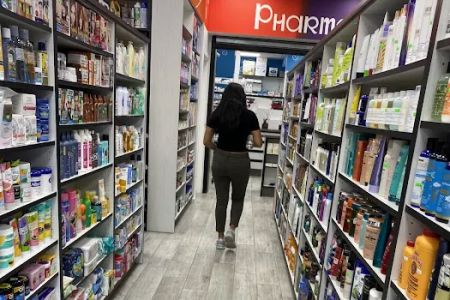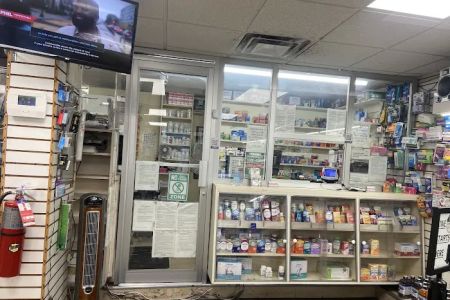How to Manage Pharmacy Finances Effectively
Running a pharmacy can be both rewarding and challenging. As a pharmacy owner, I quickly realized that maintaining smooth operations requires not just attention to the health of my customers but also to the financial health of the business. One of the biggest lessons I’ve learned is that managing pharmacy finances effectively is crucial for long-term success. Over the years, I’ve developed strategies that have helped me keep the books balanced, control expenses, and ensure that my pharmacy is financially stable. In this article, I’ll share my experience and some practical steps to help you manage your pharmacy finances more effectively.
1. Understanding the Basics of Pharmacy Financial Management
Before diving into complex strategies, it’s important to understand the fundamentals of financial management in the pharmacy business. Just like any other business, pharmacies need to focus on key areas such as revenue, expenses, and cash flow to remain profitable. However, managing a pharmacy also comes with its own set of challenges, such as fluctuating prescription prices, inventory management, and reimbursement rates from insurance companies. Understanding these basics helps you get a clear picture of where your money is going and where it’s coming from.
For me, the first step was always to ensure that I had a solid grasp on the financial terminology and key metrics that would guide my decision-making. This included learning about things like gross margins, net profit, accounts receivable, and cash flow—terms I initially found intimidating, but which soon became essential tools in managing the financial side of my business. It’s essential to have a basic understanding of financial statements, such as the balance sheet, income statement, and cash flow statement, as they provide insight into the health of the business.
2. Creating a Realistic Budget for Your Pharmacy
Once I had a better understanding of the financial basics, the next step was to create a realistic budget. A budget is one of the most important tools for managing finances in any business, and pharmacies are no exception. A good budget allows you to allocate resources efficiently and helps you avoid overspending in areas like inventory, staff, or marketing.
When I created my pharmacy’s budget, I took into account several factors, such as:
- Fixed costs: These are the costs that don’t change from month to month, such as rent, utilities, insurance, and salaries. These costs need to be accounted for first, as they’re necessary for the day-to-day operation of your pharmacy.
- Variable costs: These are the costs that fluctuate depending on the level of business, such as medication inventory, supplies, and shipping fees. I closely monitored these expenses to ensure that they stayed within reasonable limits.
- Revenue projections: I also projected the revenue based on factors like prescription sales, over-the-counter products, and consultations. This allowed me to estimate cash flow and understand whether my expenses were aligned with my revenue.
Having a detailed budget allowed me to see exactly where I was spending and earning, making it easier to make adjustments when needed. It also helped me track whether I was meeting my financial goals and identify areas where I could cut costs or increase revenue.
3. Managing Cash Flow for Financial Stability
One of the most challenging aspects of pharmacy financial management is managing cash flow. Even if your pharmacy is making good revenue, poor cash flow can cause major problems. Cash flow issues can arise when there’s a delay in receiving payments from insurance companies or when inventory needs to be replenished faster than expected. During my early days in the pharmacy business, I faced a few cash flow challenges, especially during months when prescription sales were slow.
To tackle these challenges, I implemented a few key strategies:
- Tracking Receivables: It’s crucial to stay on top of outstanding payments from insurance companies and patients. I made sure that my accounting team followed up on any unpaid invoices promptly, reducing the risk of delayed payments.
- Setting Payment Terms: I worked with insurance companies to establish clear payment terms and timelines. This allowed me to know exactly when to expect payments and helped with forecasting cash flow.
- Maintaining an Emergency Fund: An emergency fund can be a lifesaver during slow months or unexpected expenses. I made sure that a portion of my pharmacy’s profits went into a reserve fund, which I could tap into if needed to cover short-term cash flow gaps.
By keeping a close eye on cash flow and implementing these strategies, I was able to stabilize my pharmacy’s finances and avoid the stress that comes with financial uncertainty.
4. Reducing Operational Costs Without Sacrificing Quality
One of the best ways to improve your pharmacy’s financial health is by reducing operational costs. However, it’s important to remember that cutting costs shouldn’t mean sacrificing quality or customer service. In my experience, the key to reducing costs effectively is finding areas where efficiency can be improved without impacting the core values of your pharmacy.
Here are some ways I reduced operational costs:
- Inventory Management: I found that one of the biggest expenses in a pharmacy is inventory. Poor inventory management can lead to overstocking, wastage, or expired products. By implementing a just-in-time inventory system, I was able to reduce excess inventory and improve cash flow.
- Staffing Efficiency: Labor costs are another significant expense. I evaluated my staffing needs to ensure that I was appropriately staffed during busy hours and maintained an optimal team size during slower times. This helped reduce overtime pay and prevent understaffing.
- Automation and Technology: Investing in technology to streamline processes such as prescription filling, billing, and inventory tracking allowed me to reduce manual labor and improve efficiency. The upfront cost of technology paid off by reducing labor costs and minimizing errors.
Reducing operational costs helped me maintain profitability without compromising on the quality of service I provided to my patients.
5. Strategic Investment for Growth
As my pharmacy became more stable financially, I started looking for ways to grow and invest in the future. Strategic investments were key to expanding my business and improving profitability. I found that reinvesting in the business, whether through upgrading equipment, expanding services, or offering new products, helped boost revenue and attract more customers.
Some of the investments I made included:
- Offering Expanded Services: By offering additional services such as health consultations, flu shots, and medication synchronization, I was able to attract more customers and diversify my revenue streams.
- Upgrading Technology: Investing in advanced pharmacy management software helped streamline operations and improve efficiency, allowing me to handle higher volumes of prescriptions with fewer errors.
- Marketing and Customer Engagement: I invested in marketing efforts, including social media campaigns and email newsletters, to engage with customers and build loyalty.
These investments not only helped improve my pharmacy’s revenue but also positioned it for long-term growth and success.
Conclusion: The Key to Effective Pharmacy Financial Management
Managing pharmacy finances effectively requires a combination of careful planning, strategic investments, and consistent monitoring. By understanding the basics of financial management, creating a realistic budget, managing cash flow, reducing costs, and making smart investments, I was able to ensure my pharmacy’s long-term success. The financial health of your pharmacy directly impacts its ability to provide high-quality care to your patients and thrive in a competitive market. With these strategies, you too can improve your pharmacy’s financial management and achieve sustainable growth.














